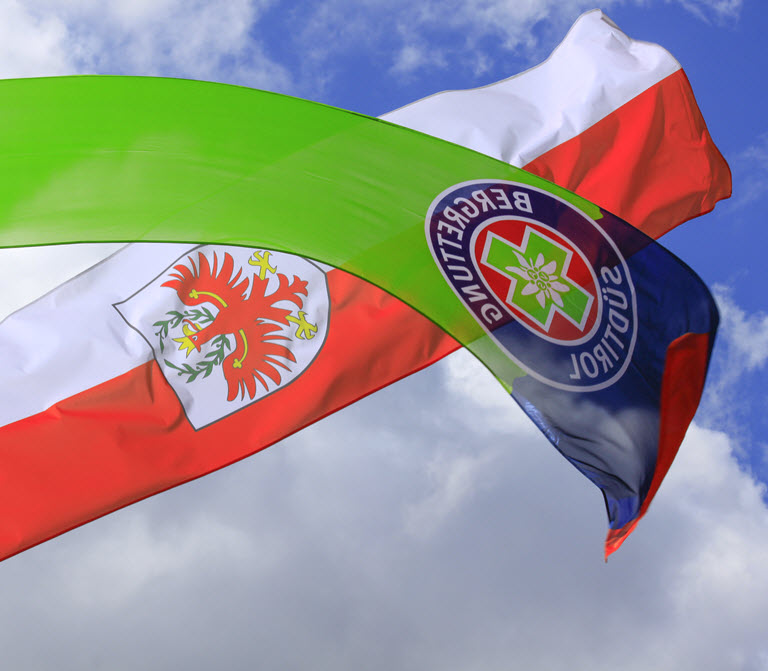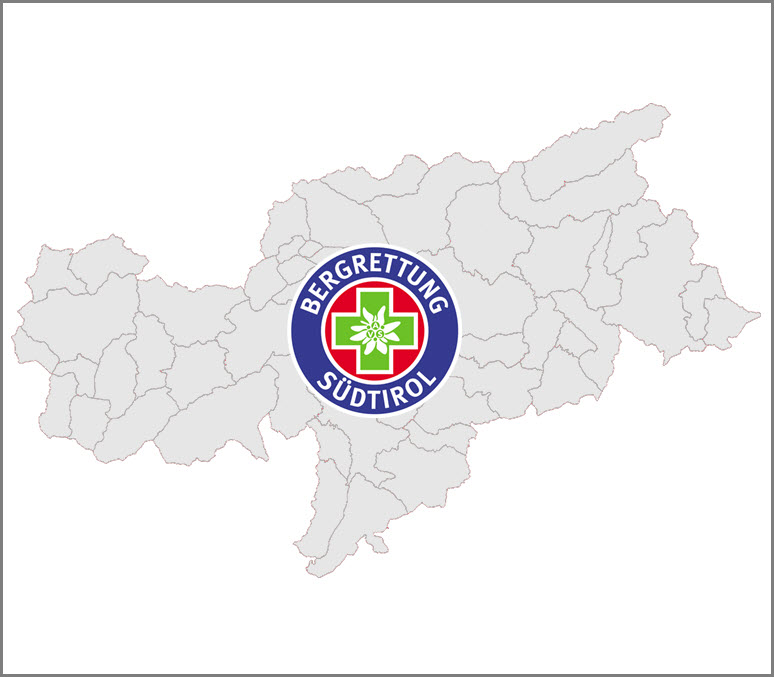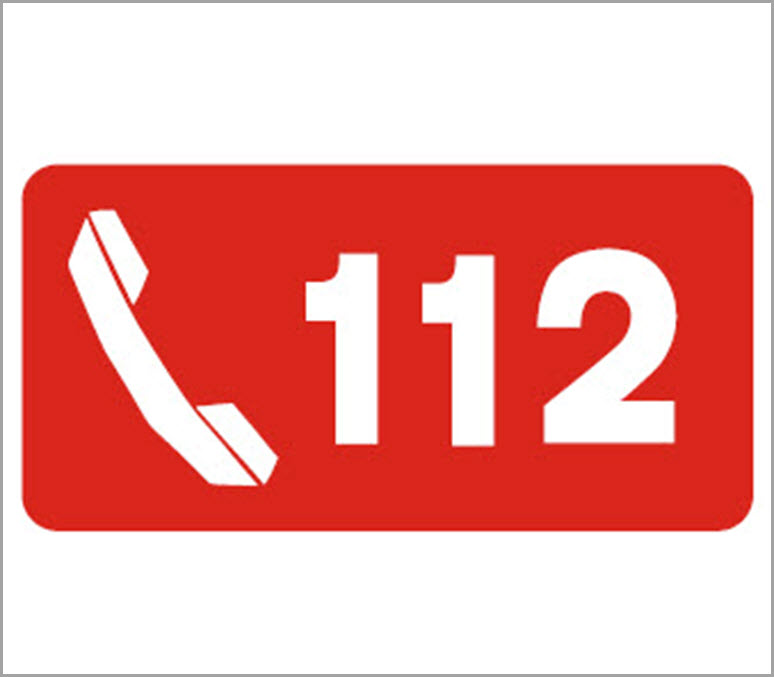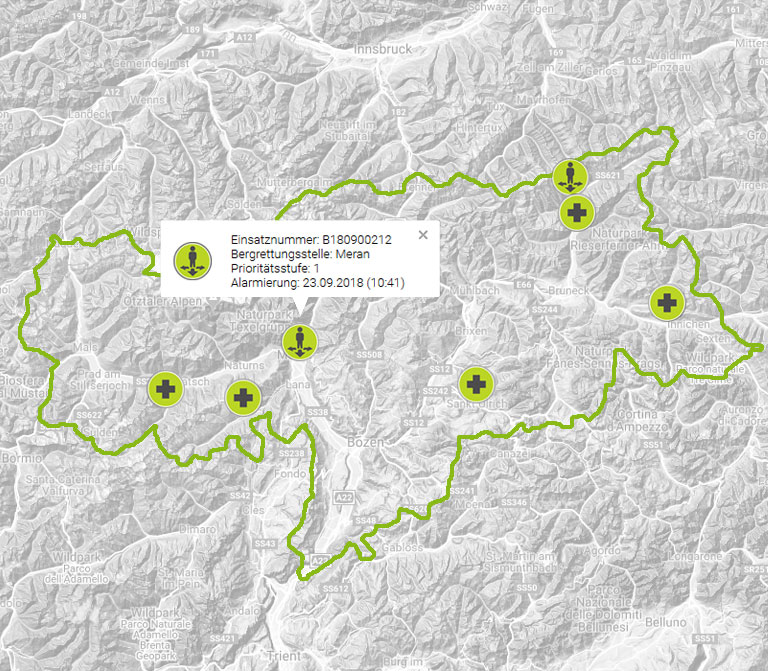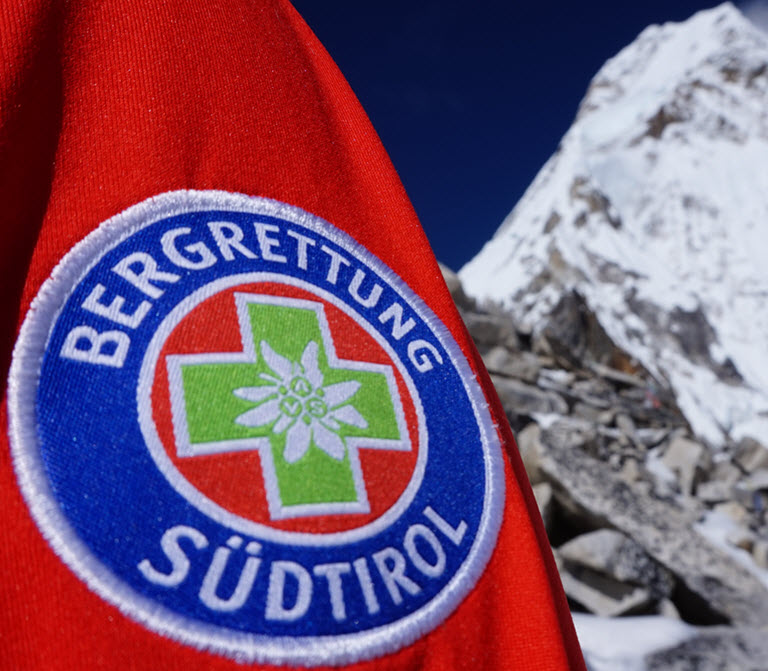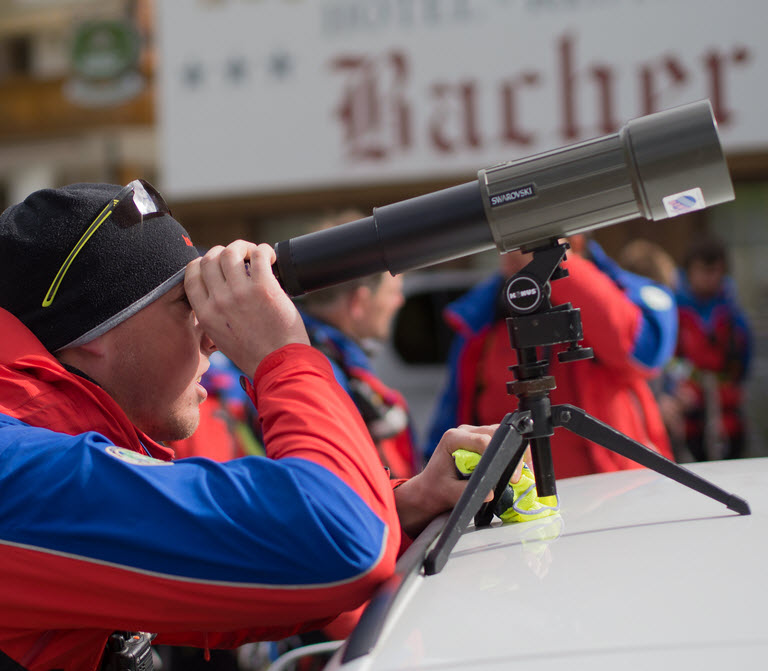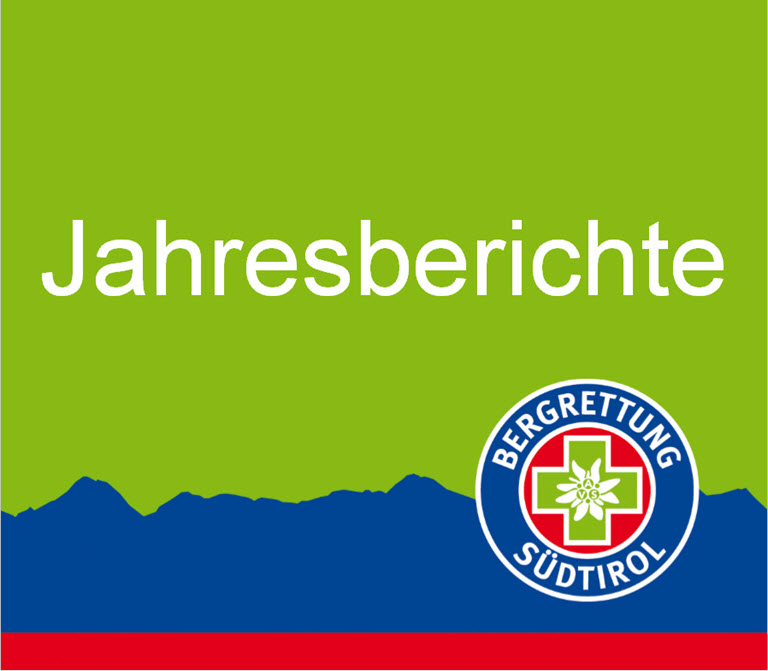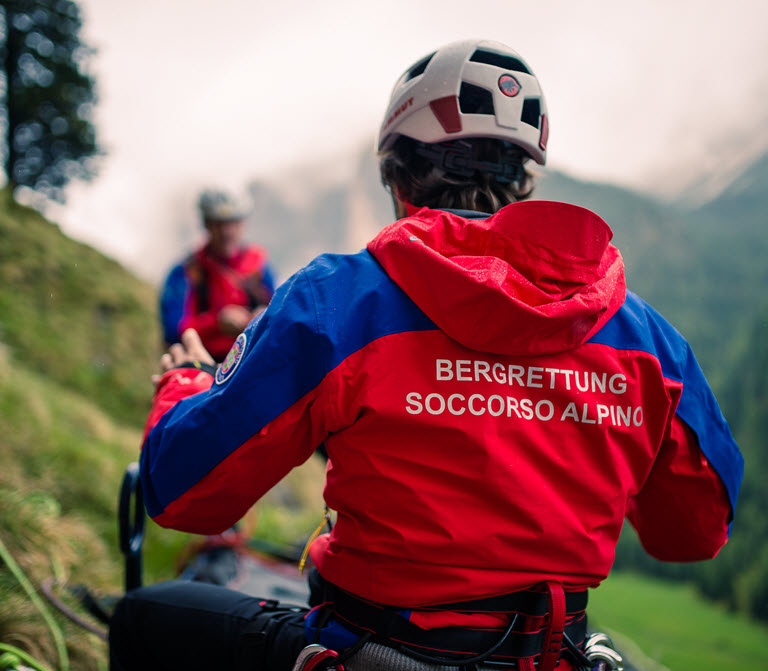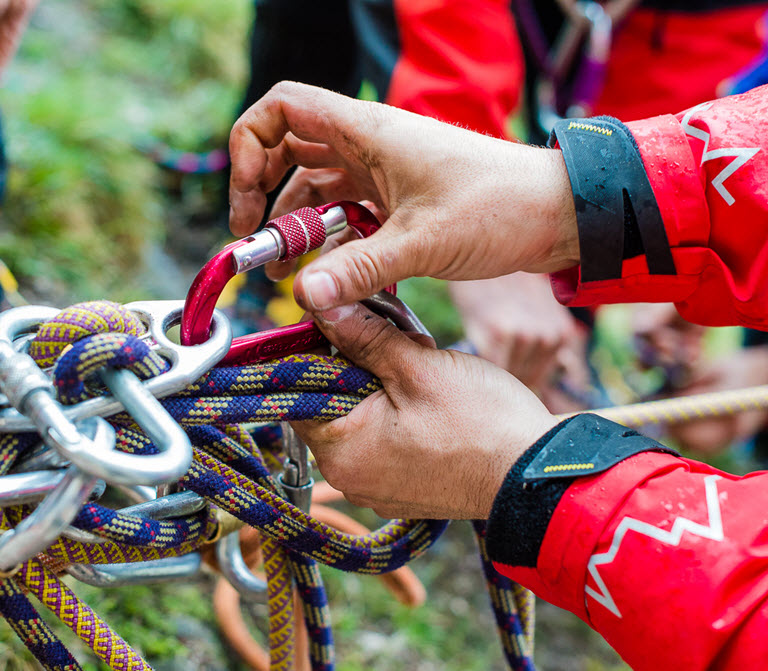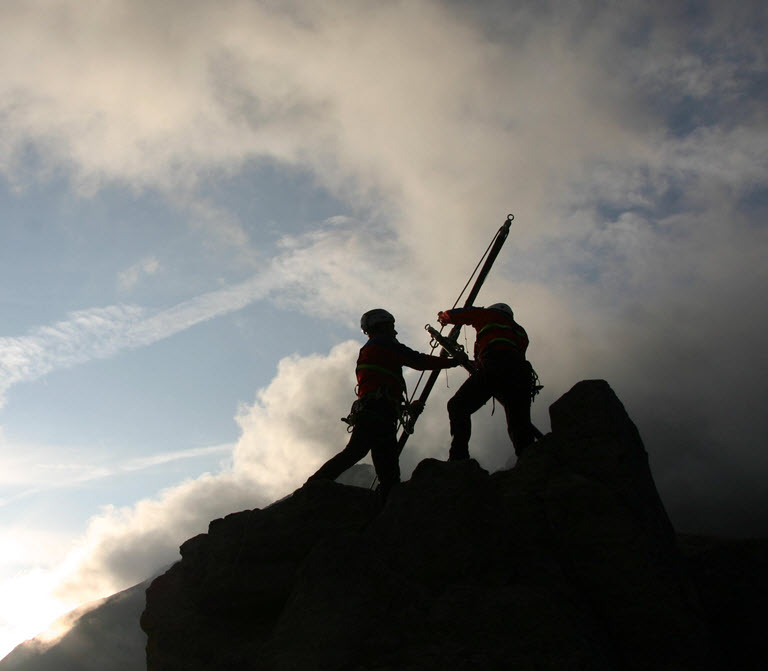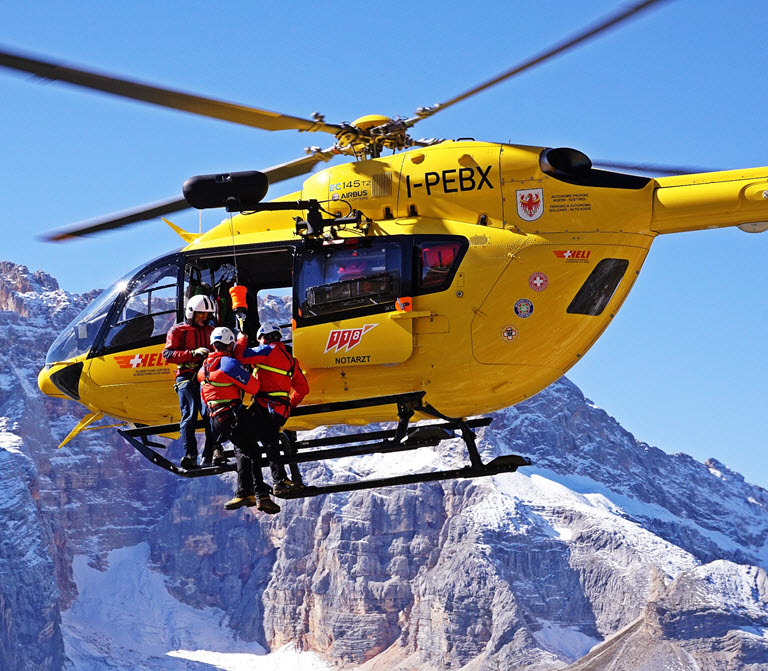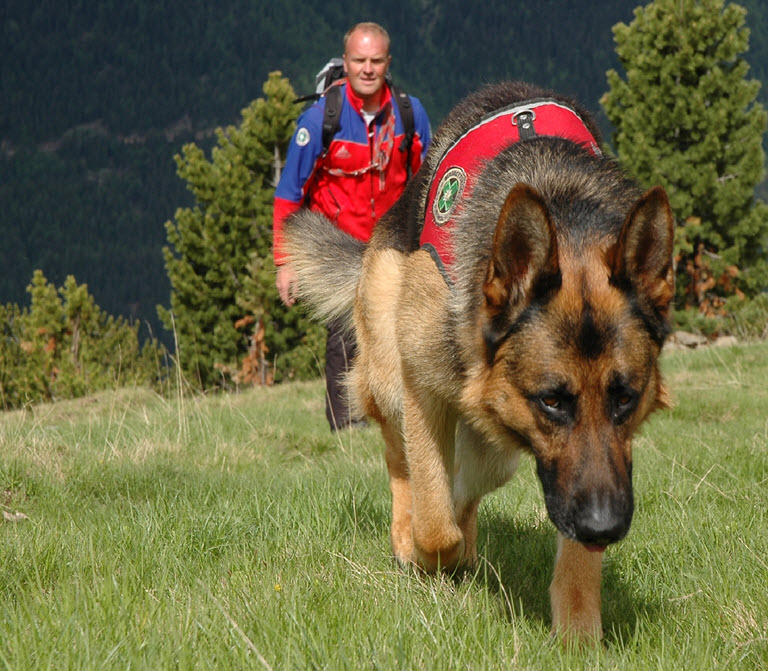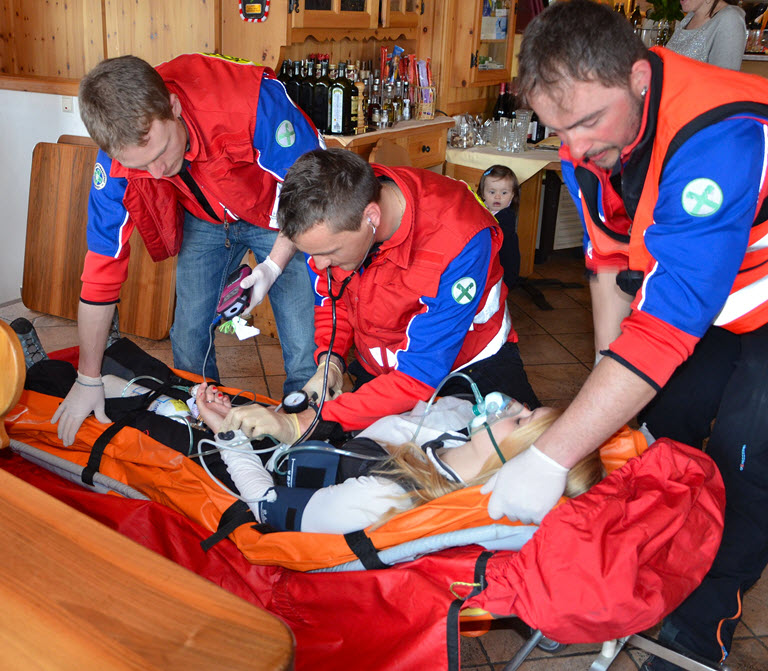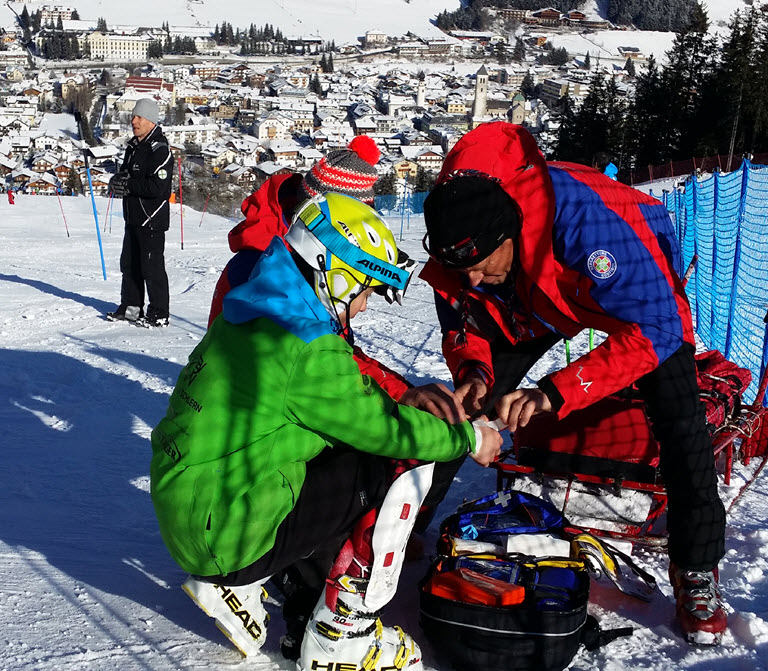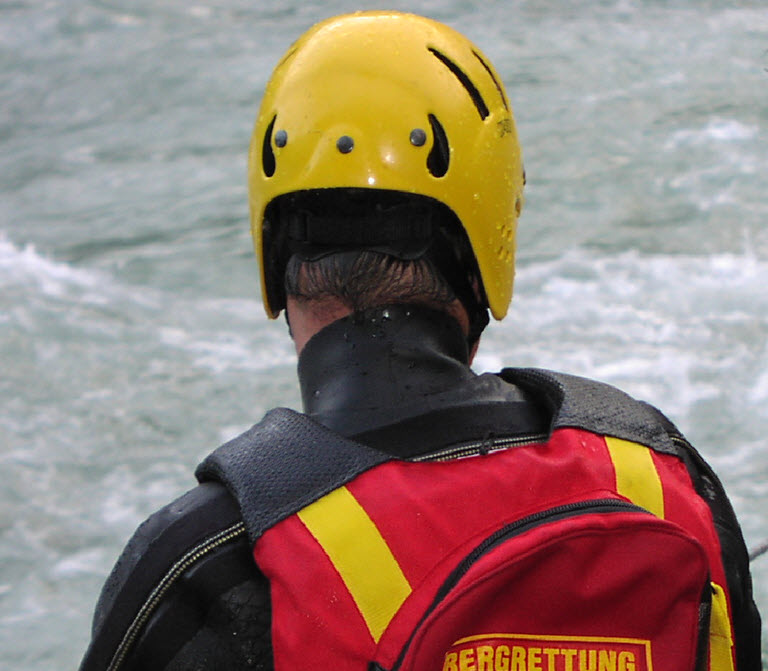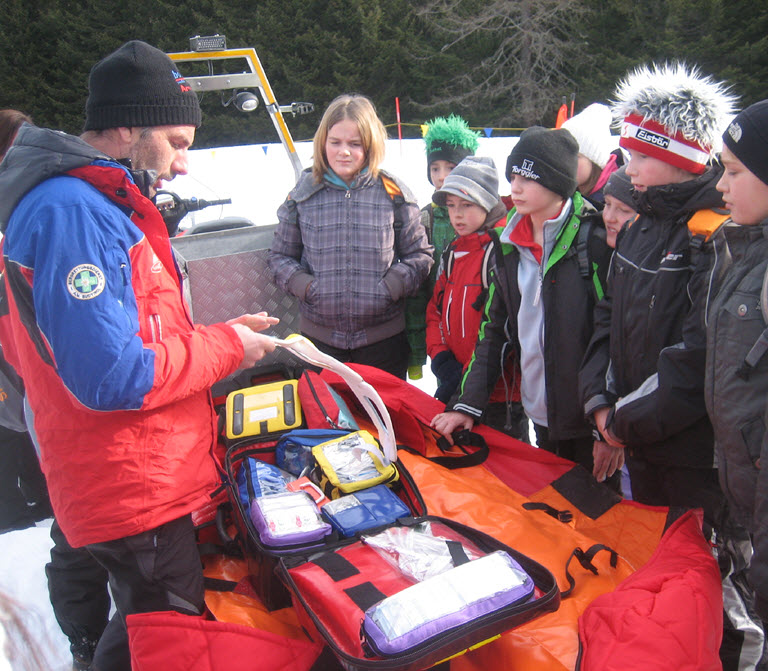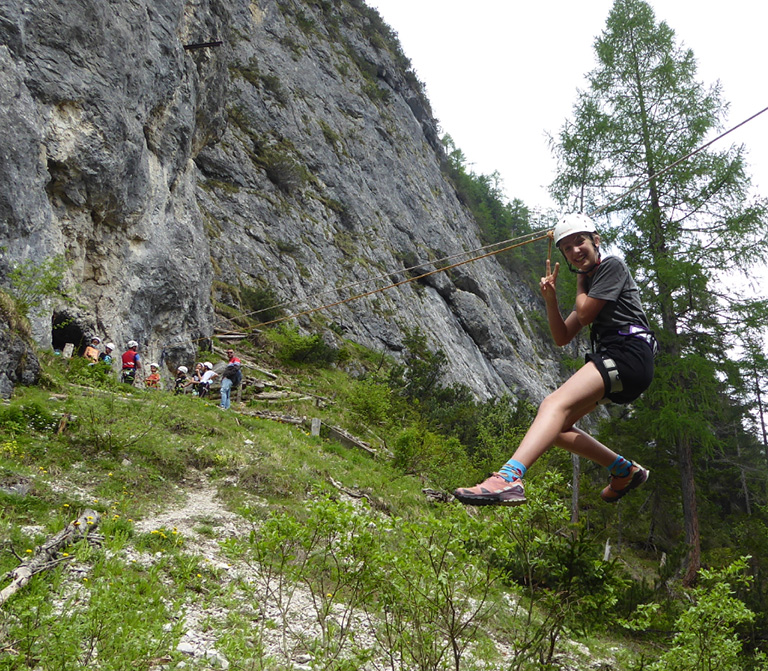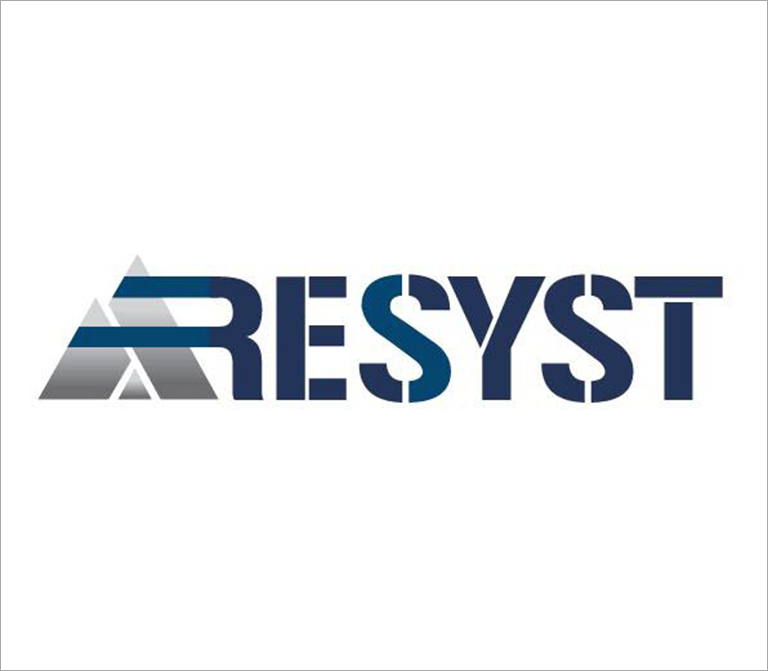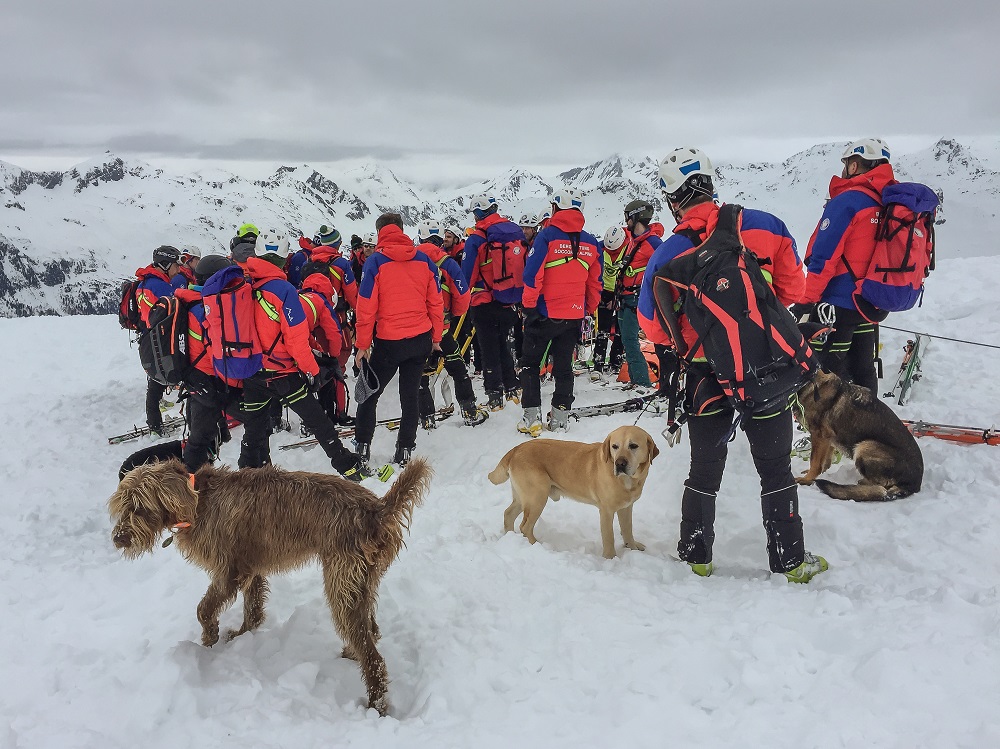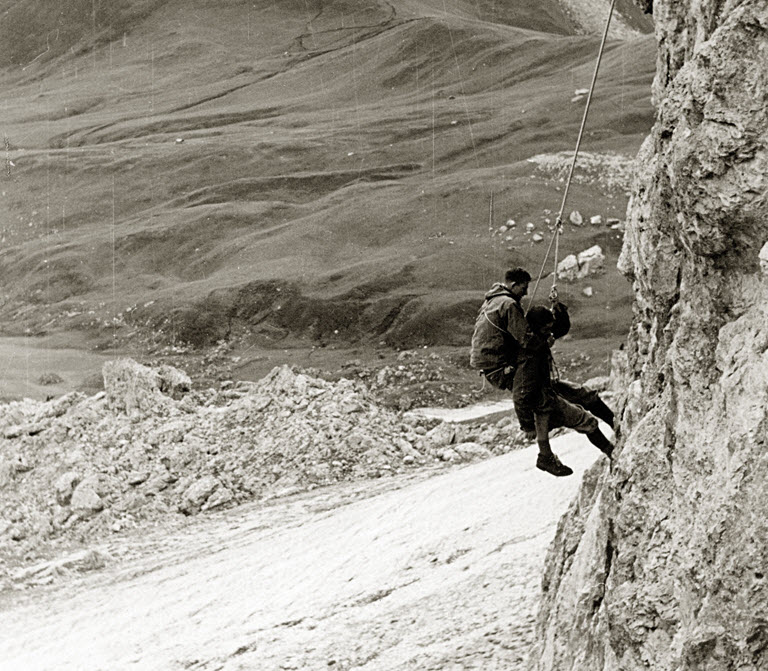
As early as 1957, two dog handlers from South Tyrol were sent to Austria on a winter rescue course by the AVS South Tyrol Alpine Association.
At the end of 1963, the South Tyrol Alpine Association bought four dogs for the mountain rescue service. A new working group within the mountain rescue service was begun. It did not take long before other active members of the rescue team also began to take to this new task. At that time, courses had to be attended abroad (Switzerland, North Tyrol, Carinthia, Allgäu).
In the early years, our group consisted of 11 dog handlers, who along with their faithful four-legged friends, found themselves in increasing demand. Marius Eccli became the first group leader of the avalanche search dog handlers.
In 1979, the first winter rescue training was held at the Kronplatz ski area. This was so well-received that in the autumn of the same year, the avalanche dog handler group was founded in the South Tyrol Alpine Association. The dog handlers therefore also became part of the Provincial Committee of the mountain rescue service.
Our dogs are trained in search missions right from the beginning, on summer courses. The fact that this was the correct decision has been demonstrated by many successful search missions involving our dog handlers.
We have also acquired bloodhounds. This breed has proven to be particularly successful in search missions in America. Until recently, man-trailing was largely unknown in Europe, until a Swiss woman introduced this idea from America to Europe. She subsequently organized seminars with American instructors.
The following specializations are available with search dogs in the mountain rescue service:
Avalanche Search
After an avalanche, people who have been buried can be searched for beneath the snow by avalanche search dog teams. Despite technical advancement with devices such as avalanche search devices or RECCO, sometimes avalanche search dogs are the only or (often) the best way to search for those buried as quickly as possible. This type of search is very expensive and stressful for both dog and handler. Since they are often the first to arrive at the scene, dog handlers require extensive knowledge in evaluation, hazard assessment and operational procedures. The dog must not be distracted by other dogs, probing chains, other search teams or any other avoidable distractions.
Area Search
The use of area search dogs has its origins in the two world wars, when they had the task of tracking down wounded soldiers and alerting medical teams.
In an area search, the dog runs free in pursuit of the human scent. The dog handler gives the dog a search area and then ensures that the dog searches the assigned search area, while at the same time observing the wind direction.
The dog does not look for one person in particular, but for anyone in distress. They are trained with different “victim types”, such as sitting, crawling, creeping, and screaming persons, or those attempting to crawl away.
Man-Trailing
Man-trailing is a type of search for people using search dogs, which are referred to as man-trailers. Dogs are excellent at searching for people due to their extraordinary sense of smell. The difference between a man-trailer and other search dogs is that a man-trailer can differentiate between different human odors in its search and, despite many distractions, will focus exclusively on the scent of the person being searched for.
Man-trailers can be used not only to track pedestrians, as even an enclosed car or vehicle does not prevent persons from being traceable by them. Man-trailers can be used in buildings as well as farmed areas.
Dogs are not machines, where just pressing a button causes it to work. Their frame of mind and external circumstances affect their search capabilities. This is why it is important that every dog search team is optimally prepared, so that optimal success can be achieved when they are deployed!

